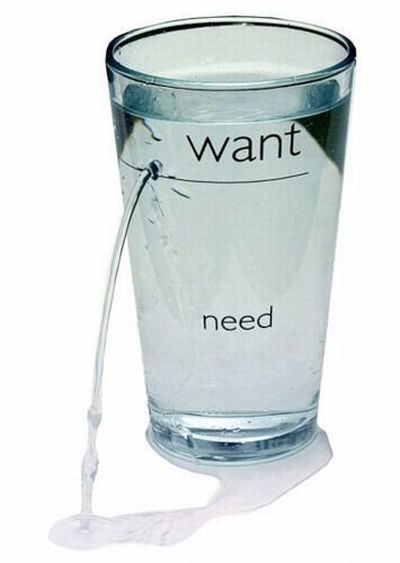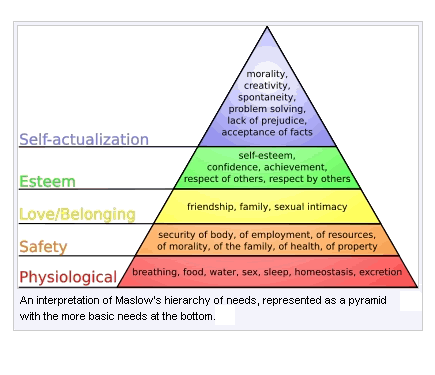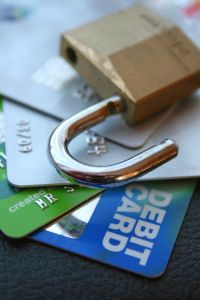
Distinguish between wants and needs
Distinguishing between wants and needs depends a great deal on your perspective. The more narrow someone interprets their life, the more likely they are to rationalize some wants as needs. For instance, in high school someone could literally buy status and position by the brand of clothing they wear. In this myopic view teenagers tend to be rather passionate about the brand of jeans they wear (instead of being satisfied with any pair of jeans that covers their behind).
Widening one’s view allows wants to be exposed as wants. Needs hardly need justification to be purchased.
What are needs?
You can’t get through college without seeing Maslow’s Hierarchy of Needs. As you discover what your needs are consider Maslow’s approach. The only things in the diagram that are actual physical (or material) things are on the base of pyramid. The longer someone dwells in the lower level the less likely they are to move to higher levels. From my own life and watching others, the biggest problem comes when we try to fulfill a higher need by ‘purchasing’ it.

When wants become needs.
Consumer debt is a major problem in the United States. This type of debt represents a gluttony of wants justified as needs. One way to curb wants before they become needs is to switch to an all cash lifestyle. As this happens many of the items purchased with consumer debt are never purchased. Saving up to buy big ticket items allows time to make more rational decisions (and give you a chance to shop around).
What do you think?
What have you seen that helps prevent wants becoming needs? Please leave a comment and tell us what you think.


